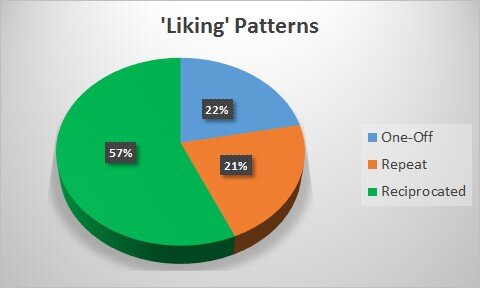Getting “Liked”: Is Content Overrated?
We are regularly bombarded with the message that “Content is King”, quickly followed by a plethora of methods, tips and even tricks on how to make our content more attractive i.e. being “Liked” by many. Social media has introduced the “Like” button so we can more explicitly signal our appreciation of the content that we are exposed to. But how much is appreciation directed by the “content” of that message and how much is that appreciation directed by the messenger? We have some recent analytics that provides some new insights on this.
Content or Messenger?
Doubt about the true value of content was first flagged by Canadian Philosopher Marshall McLuhan, with his often quoted “the medium is the message” statement in the 1960s. In the age of social media, this has now morphed into “the messenger is the message”, with the rise to prominence of the “Influencer”. Influencers are those rare individuals that can influence the buying behaviours of many, simply through the power of their personal recommendation. Think about your own “liking” behaviour on Facebook. How often would you “like” a passive Facebook advertising page, as opposed to “liking” a posting made by a human influencer, linking back to that very same page? This is a clear example of the power of the messenger, being more important than the message itself.
Enterprise “Liking”
I have recently written about how the “Like Economy” we experience in consumer social networks may not map well when social networks move inside the enterprise in the form of Enterprise Social Networks (ESN). Unlike consumer social networks, we are unlikely to see advertisements tolerated in the ESN. But Enterprises often do want to send messages to “all staff”, particularly for major change initiatives they want staff to “buy into”. Regularly, corporate communications staff are keen to look at statistics on how often the message is read and even ‘liked’. But is this a true reflection of engagement with a message?
Our benchmarking of ESNs has identified that “Likes” make up well over 50% of all activities undertaken on ESNs. In the absence of carefully crafted advertising sites, just what is driving our “liking” behaviour in the Enterprise? We decided to explored this by not looking at every message posted (for privacy reasons Swoop does not access message content), but by looking at patterns of who “Likes” were directed at. We aggregated the “Likes” from 3 organisations, from our benchmarking partners, for individuals who had posted more than 500 “Likes” over a 12 month period. Collectively, there were over 4,000 individuals that met the criteria. We then categorised their “Likes” according to:
| “Like” Characteristic | Interpretation |
|---|---|
| One-off (‘Like’ recipient was a once only occurrence) | Attraction is largely based on the content of the message alone. |
| Repeat Recipient (‘Like’ recipient was a repeat recipient from this individual) | Recipients are potentially ‘influencers’, so the motivation may come from the person, more so than the message content. |
| Reciprocated (‘Like’ recipient has also been a ‘Like’ provider for this individual) | Recipients have a ‘relationship’ with the ‘Liker’, which drives this behaviour. |
‘Like’ Analysis Results
The results of our analysis is shown below:
The results show clearly that in the Enterprise context, the driver for ‘liking’ behaviour is the relationship. The data suggests that you are nearly 3 times as likely to attract a ‘like’ to your message from someone, if you had previously ‘liked’ a posting of theirs.
So what is the implications for the Enterprise?
If indeed an Enterprise is relying on counting ‘likes’ as a measure of staff engagement, one needs to encourage the formation of relationships through reciprocated actions as a priority, over spending time ‘crafting the perfect message’, or even on relying on influencers to build engagement. Specifically, one could:
Acknowledge a “Like”, in particular, if you have never responded to this person before.
Craft your important messages as a means to start a conversation, more so than a statement of opinion. Explicitly frame your statement as a question or explicitly ask for feedback.
Start to think about ‘engagement’ as more than a ‘read’ or a ‘like’ and more from a relationship perspective. How deep and broadly is your issue being discussed?
When you read advice from social media experts on “how to generate more ‘Likes’ for you content”, replace this with “how to generate more ‘relationships’ using your content”.
As I am writing this post I’m painfully reminded of the need to ‘eat your own dog food’. So I’m making a commitment that if you respond or ‘like’ this article, I will at least try to respond in kind!
How do these results map with your own experiences?




